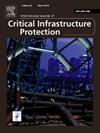测量关键基础设施的空间可达性:通路识别模式
IF 5.3
3区 工程技术
Q1 COMPUTER SCIENCE, INFORMATION SYSTEMS
International Journal of Critical Infrastructure Protection
Pub Date : 2025-04-03
DOI:10.1016/j.ijcip.2025.100760
引用次数: 0
摘要
地震或洪水等自然灾害可能严重破坏交通网络,并导致对其他关键基础设施(CI)的级联效应。有效的道路网络对于维持医院或消防站等公共设施的空间可达性至关重要,尤其是在发生灾害的情况下。在本研究中,我们引入了一个基于地理信息系统(GIS)的模型,该模型能够通过最短路径分析来识别和量化CI设施的通道,即通道识别(ARI)模型。在模型中包含危险图可以比较基线场景和危险场景中的CI可访问性。我们将详细阐述的模型应用于两个案例研究,分别考虑德国汉堡洪水期间医院的可及性和伊朗德黑兰-卡拉伊大都市区地震期间消防站的可及性。结果显示了两个案例研究之间的显著差异:洪水对汉堡医院可达性的总体影响较低,但单个医院在洪水期间失去了高达40%的通道。然而,在德黑兰卡拉杰,该模型表明,大约38%的消防站的通道暴露在地震危险中,而五分之一的消防站失去了50%以上的通道,四个设施完全无法进入。这些发现强调了通过确定风险最大的CI设施并对其进行优先排序来制定强有力的应急计划的必要性。ari模型的新颖之处在于其以设施为中心的方法来衡量单个CI服务的空间可达性,从而揭示了关于直接通道的潜在损失的有价值的见解。模型的可移植性允许将其适应各种用例,其中考虑了不同的危害或CI设施类型。该模型可以作为基于CI可及性的资源优先分配、疏散措施规划和加强灾备的决策工具,为相关利益相关者服务,适用于灾害管理的准备和响应阶段。未来,计划通过实施动态危险地图、交通需求数据和对结果进行额外加权来扩展ari模型。本文章由计算机程序翻译,如有差异,请以英文原文为准。
Measuring spatial accessibility to critical infrastructure: The Access Road Identification model
Natural hazards such as earthquakes or floods can severely disrupt transportation networks and lead to cascading effects to other critical infrastructure (CI). A functioning road network is crucial to maintain spatial accessibility of CI such as hospitals or fire stations, especially during disaster scenarios. In the present study, we introduce a geographic information system (GIS)-based model that is able to identify and quantify the access roads to CI facilities through shortest path analysis, namely the Access Road Identification (ARI)-model. Including hazard maps into the model allows comparing CI accessibility in a baseline scenario with a hazard scenario. We exemplary apply the elaborated model to two case studies considering the accessibility of hospitals during floods in Hamburg, Germany and fire stations during an earthquake event in the Tehran-Karaj metropolitan region, Iran.
The results show significant differences between the two case studies: Floods have an overall low impact on the accessibility of hospitals in Hamburg, but single hospitals lose up to 40 % of their access roads during the flood. In Tehran-Karaj however the model indicates that about 38 % of the fire stations have access roads exposed to the earthquake hazard, while a fifth of them lose over 50 % of their access roads and four facilities are completely inaccessible.
These findings highlight the need for robust contingency planning by identifying and prioritizing CI facilities that are most at risk. The novelty of the ARI-model consists in its facility-centered approach to measure spatial accessibility of single CI services, thus unveiling valuable insights regarding the potential loss of direct access roads. The transferability of the model allows to adapt it to various use cases, where different hazards or CI facility types are considered. The model can serve relevant stakeholders as a decision-making tool for prioritizing resource allocation, planning evacuation measures and enhancing disaster preparedness based on CI accessibility, thus being applicable both to the preparation and response phase of disaster management. In the future, an extension of the ARI-model is planned by implementing dynamic hazard maps, data on traffic demand and additional weighting of the results.
求助全文
通过发布文献求助,成功后即可免费获取论文全文。
去求助
来源期刊

International Journal of Critical Infrastructure Protection
COMPUTER SCIENCE, INFORMATION SYSTEMS-ENGINEERING, MULTIDISCIPLINARY
CiteScore
8.90
自引率
5.60%
发文量
46
审稿时长
>12 weeks
期刊介绍:
The International Journal of Critical Infrastructure Protection (IJCIP) was launched in 2008, with the primary aim of publishing scholarly papers of the highest quality in all areas of critical infrastructure protection. Of particular interest are articles that weave science, technology, law and policy to craft sophisticated yet practical solutions for securing assets in the various critical infrastructure sectors. These critical infrastructure sectors include: information technology, telecommunications, energy, banking and finance, transportation systems, chemicals, critical manufacturing, agriculture and food, defense industrial base, public health and health care, national monuments and icons, drinking water and water treatment systems, commercial facilities, dams, emergency services, nuclear reactors, materials and waste, postal and shipping, and government facilities. Protecting and ensuring the continuity of operation of critical infrastructure assets are vital to national security, public health and safety, economic vitality, and societal wellbeing.
The scope of the journal includes, but is not limited to:
1. Analysis of security challenges that are unique or common to the various infrastructure sectors.
2. Identification of core security principles and techniques that can be applied to critical infrastructure protection.
3. Elucidation of the dependencies and interdependencies existing between infrastructure sectors and techniques for mitigating the devastating effects of cascading failures.
4. Creation of sophisticated, yet practical, solutions, for critical infrastructure protection that involve mathematical, scientific and engineering techniques, economic and social science methods, and/or legal and public policy constructs.
 求助内容:
求助内容: 应助结果提醒方式:
应助结果提醒方式:


